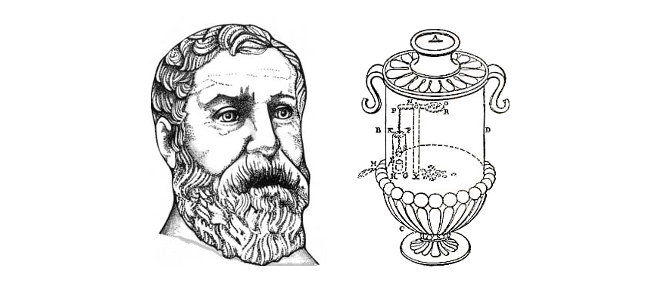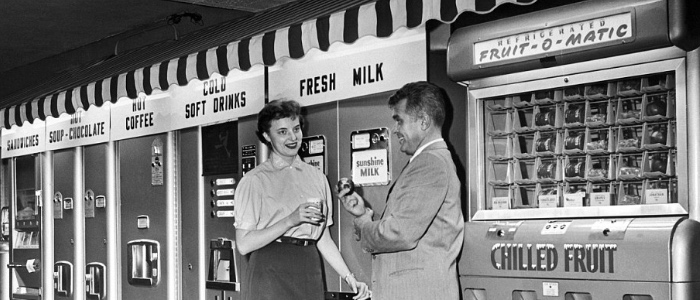History of Vending Machines: Part I
Believe it or not, the earliest reference to a vending machine was in the First Century AD.
Yes, you read that correct. Vending machines have such a lengthy history that their origin begins even before the peak of the Roman Empire. The first known vending machine was created by a Greek mathematician and engineer named Hero of Alexandria. Hero, also known as Heron or “The Father of Physics”, was one of the greatest inventors of all time. He developed many devices which in some form continue to be used today, from the syringe to the fire engine, from the water fountain to the windmill.
However, Hero only turned his attention toward the vending industry after becoming vexed at the greediness of some of his fellow compatriots. Annoyed at their overuse of the holy water in his favourite Egyptian Temples, Hero built a coin-operated holy water dispenser. It worked like so: worshippers would pop a coin in the top of the machine which fell onto a metal plate. The plate’s resulting weight imbalance then forced open a valve in the side of the machine, allowing holy water to flow through an external pipe and out to the worshipper. At the end of the day, the coins could be emptied from the machine and the water replenished. Genius.

Unfortunately, coin-operated devices saw little innovation during the succeeding decades. In fact, the development of vending “technology” was so slight it took just over 1,500 years before vending pioneers made any advancement. But fortunately for those making money in today’s vending market, our forefathers’ forefathers had some unhealthy habits.
Records show that coin-operated machines popped up again in taverns around England in the early 1600s. These portable machines were made of brass, carried from customer to customer, and predominantly dispensed tobacco and snuff to drunken patrons. It seems folks had spent the Middle Ages moving from spirituality to debauchery. However, while these machines were widely used at the time, they once again they failed to take hold, and it was only in the 19th century that the vending machines we know and love today finally took hold.
In 1822 an English bookseller named Richard Carlile created a newspaper vending machine to disseminate banned publications, particularly Thomas Paines’s The Age of Reason, a piece of work which caused a mighty furour among Englishmen at the time. Then in 1867, a presumably slightly more conservative Simeon Denham patented a stamp machine under British Patent no. 706. While Denham most likely patented it to, well, dispense stamps, it nevertheless became the world’s first fully automatic vending machine.
So, Sir* Simeon Denham, thank you for giving birth to the industry as we know it today.
* Not an official title.


